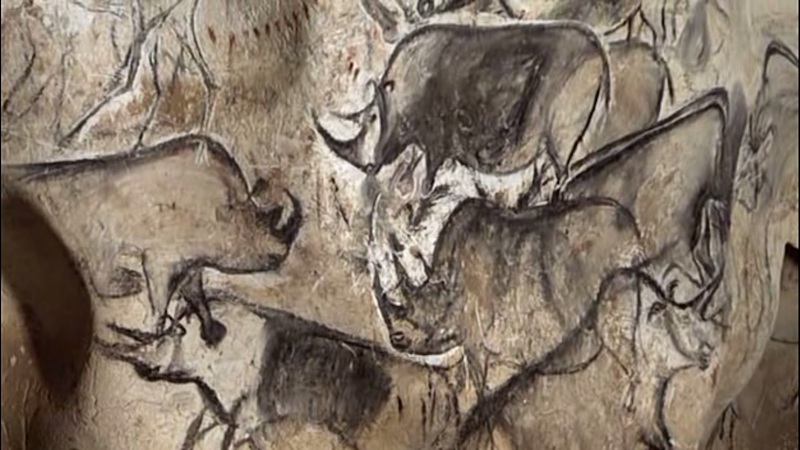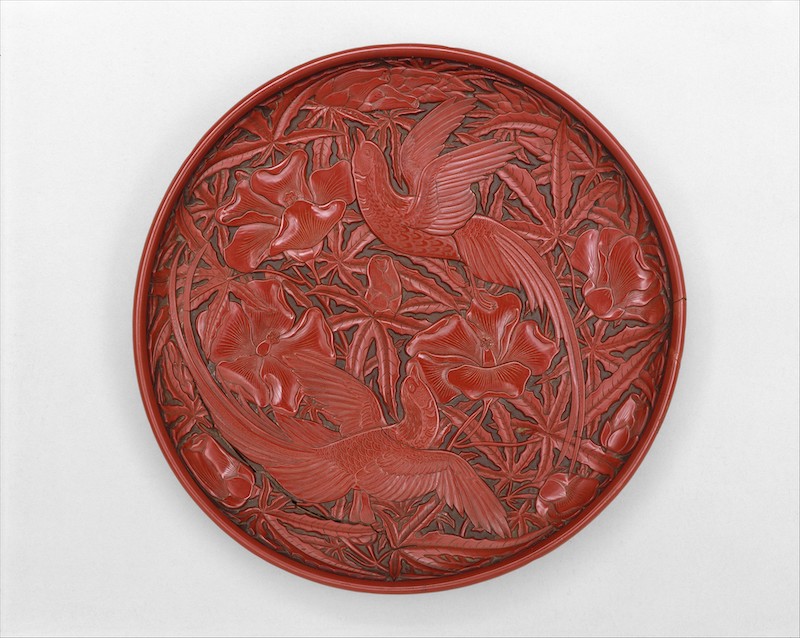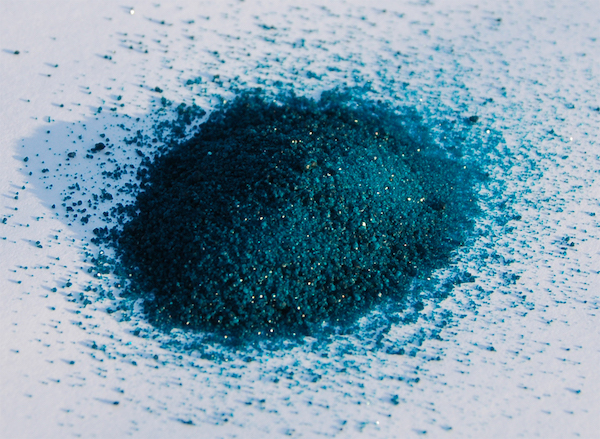If you’re not part of the solution, you’re part of the precipitate.
The Oldest Chemistry Joke Known To Exist
A common theme you may have noticed in the science articles on the Pandemic Blog is that a near-infinite variety of colors can be found in nature, but not all of the material that gives rise to these colors are suitable for use in painting or dyeing. However, ancient and medieval artists were not limited to the pure, stable colors found in minerals or mineral earths. Many important pigments and dyes were made throughout recorded history by taking natural products (geological or biological or both) and treating them in some way to change their color, or improve their chemical characteristics, or even to synthesize pigments from entirely different things. Many sophisticated techniques to improve the use of natural products were developed far in advance of the modern understanding of chemical principles that became codified from the 17th century on. But the ancient and medieval world nevertheless had access to many reactive chemicals, both from minerals and biological products, which could be used in making or altering pigments. Vinegar contains acid; aged urine, ammonia; Lye can be had from ash and water; salt deposits can be sources of reactive carbonates or metal salts that can be used as mordants. While ancient and medieval artisans had little notion of what we call chemistry, they were perfectly fine at experimentation and developing sophisticated techniques that had no equal until the modern era.

A witty person once said to me that the entire development of science and technology by humans can be summarized by “set fire to it (or, alternately, blow it up) and see what happens.” And indeed, among the earliest pigments used by prehistoric artists was charcoal. Charcoal can be found in the leftovers of wood fires, but from before antiquity it was intentionally made by slowly heating wood twigs to the point of combustion while restricting the access of air. In the absence of a flow of oxygen the wood does not ‘completely’ burn and oxidize to carbon dioxide (a gas of little utility if you are not a plant or a brewer), instead leaving behind a somewhat sticky, hard black residue, nearly pure carbon, that can be used to make black pigment or a very tidy, hot, and nearly smokeless fire when burned in an open fire. A very fine black pigment powder (called lampblack) can be recovered from the smoke of burning of oil in a lamp, another technique known to the ancients. You can also treat some minerals with fire or heat to alter their color. As mentioned previously, the colors burnt sienna and burnt umber are natural earth pigments treated with heat, which causes chemical reactions that reduce some of their more oxidized (and therefore brighter) iron oxides to hematite, a darker mineral. Heating white lead oxide (ceruse) can lead to a yellowish pigment that Theophilus described as a base for making flesh tones (Hawthorne and Smith, 1979). And it should be mentioned at this point that if you treat chalk or limestone with high heat, you get quicklime, a reactive chemical used to make cement or plaster and in some pigment making processes.
Another important property of pigments that artists need to take into account is solubility. Pigments that dissolve readily into water do not necessarily make good paints, as you would rely on the pigment coming out of the water solution to bind to the surface in some way. This is frequently an important part of the fabric dyeing process, where treating a dye solution with a chemical (frequently called a mordant) is required to make the dye turn the proper color and/or bind properly to the fabric. On the other hand, most paints are in fact suspensions of tiny particles of pigment in medium – they do not dissolve, but form an emulsion of sorts with the water, oil, egg yolk, etc. In many cases the same exact pigment can be used for watercolor or oil paints or tempera, because the pigment itself does not dissolve in or react with the medium.

The Metropolitan Museum of Art, New York.
So some natural dyes that dissolve in water can be treated with a mordant to make them insoluble. They then precipitate out of the aqueous solution and become a solid, that can be dried and ground into a pigment powder. These pigments are called lake pigments. The term lake in this context is an English corruption (of course) of the word lac, which refers to the Indian scale insect that makes (like other highly prized bugs) a brilliant red pigment, and also a very useful waxy resin, from which we get lacquer and shellac. Lac in turn has the same root as the Sanskrit word lakh, meaning 100,000 (because there are SO. MANY. BUGS. required to make this). Presumably this also means lac pigments were used in making red lake pigments, but now, like in many bug-derived pigments, there are synthetic alternatives.
A word or two on mordants. Despite what you might think (well; I thought it), the Latin derivation of this word is not “something that makes you dead.” In fact it’s derived from mordēre, which means to “bite.” This makes great sense in the dyeing context, where mordants are used to make the water soluble dyes stay attached to the fabric. A mordant, chemically, is frequently a colorless metal salt that can form a coordination complex (as described in our earlier article) with the organic dye molecule and still have the ability to bind with something else. In the case of lake pigments it changes the dissolved pigment to an insoluble one rather than make it bind to fabric. Common mordants available from ancient times include calcium carbonate (from chalk or bone), lye (from ash), alum (from evaporated salt deposits in Egypt, or ground minerals), and green vitriol (ferrous sulfate, from certain kinds of rust).

Painting: Franz Eugen Köhler, Köhler’s Medizinal-Pflanzen (1897)
The earliest lake pigments known to be produced were indigo lakes made in ancient Egypt from the woad plant. The exact techniques the Egyptians used are not known, but it is thought that they may have used plants grown in chalky, alkaline soil (so there would be calcium carbonate or other light metal salts at hand). Perhaps the most well known lake pigment is made from madder. Madder is well known as a source of red or yellow dye from the purpurin and alizarin found in the roots. The mordants could be chalk, clay, or crushed bone (all containing calcium salts). The ancient Egyptians used gypsum (calcium sulphate hexahydrate, a brilliant white mineral found in evaporated ocean deposits) with madder to make a pink pigment.

(Public Domain, Photo Source)
A variety of natural pigments were made in ancient and medieval times from the oxidation products of metals. In addition to the familiar iron oxide from rust, blue pigments could be made by corroding copper in the presence of calcium carbonate (azurite is a natural mineral of this nature). Theophilus (I:34, in Hawthorne and Smith) describes a particularly nasty concoction of sulfur and mercury heated over coals produced the pigment Renaissance artists called cinnabar (after the natural mercury ore from Spain or California which can make a fine pigment itself; but the smelted metal was far more valuable and was more widely available). The pigments called “salt green” or “Spanish green” were made from copper, salt, and vinegar to produce copper acetate. Ceruse, the white pigment also used in makeup by the ancient Romans, was made from lead heated with vinegar or urine.

Hvalov zbornik, 1404. Illustrated Slavic manuscript from medieval Bosnia. (Public Domain image, via Wikipedia)
Finally, it was known that some pigments, in particular folium, as described in the previous article, were known to change color in response to the pH, or the acidity, of their medium. Theophilus (I:33) describes making lye and using quicklime to raise the pH of folium to change its color from red to purple to blue. Similar pH sequences are used to adjust the color of indigo as part of the mordanting process for dyeing. It was not until the 17th century that scientists realized you could turn this around and use changes in colors of certain pigments (called indicators) to determine the acidity of a solution.
To conclude, it can be safely assumed that almost any material you can think of that has color to it was subjected to some kind of attempt at alteration by ancient or medieval artisans. Heat, acid, base, and other reactive chemicals were all tried in attempts to improve natural products. In many cases successes resulted in techniques that were used for thousands of years. But many of these techniques that remained important through the Middle Ages became largely extinct, in part from the globalization of trade providing cheaper substitutes for expensive traditional materials – but in the modern era synthetic chemistry has come to dominate the production of pigments for artistic purposes. Next time we’ll talk about why and how this came to pass.
Thank you for joining us as we do Pandemic Projects, meant to keep you energized, curious and learning!
In this article we referred to the translation of “On Divers Arts” by ‘Theophilus’ (possibly Roger of Helmarshausen, ca. 1100 C.E.) by J.G. Hawthorne and C.S. Smith, Dover Publications, New York, 1979.

[…] produced by scale insects from Anatolia and Armenia. Even in the medieval era the discovery of chemical modifications, sometimes guided by the protoscience of alchemy founded in the Islamic world, led to synthesis of […]